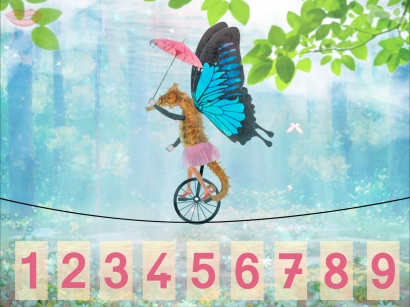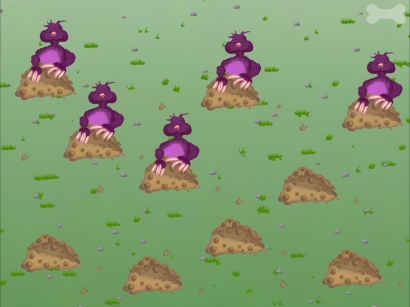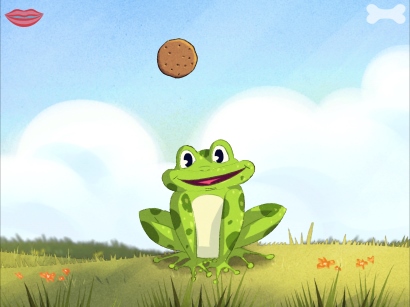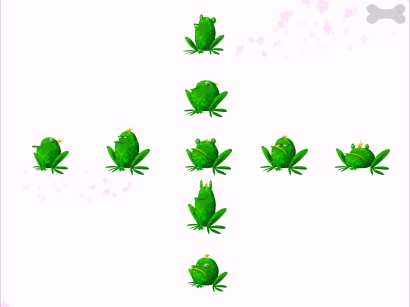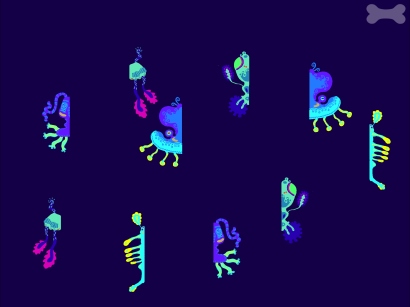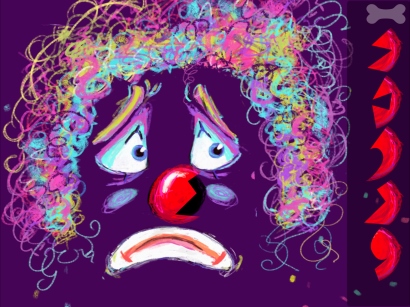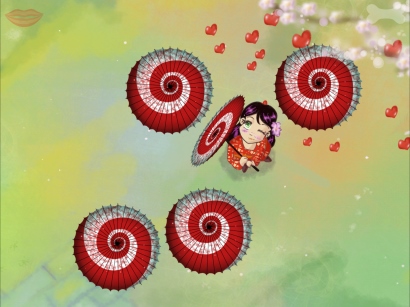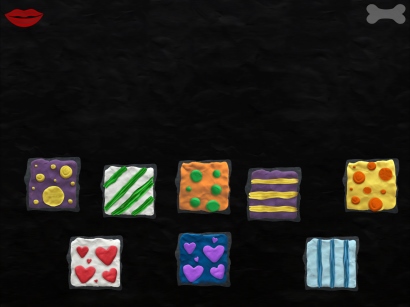 Comparing objects – based on certain characteristics
Comparing objects – based on certain characteristics
Certain objects or images are compared based on one or more characteristics.
For example: "Who is taller / shorter / thicker / thinner?"; "Which box has red hearts?"; "/ has a yellow beak / has a heart / is striped / has points?)
This skill can be practiced in the following educational games:
- learning level "Penguins" in Lazuli 4+
- learning level "Jack-in-the-box" in Lazuli 4+
- learning level "Beach" in Lazuli 4+
- learning level "Doors" in Lazuli 5+

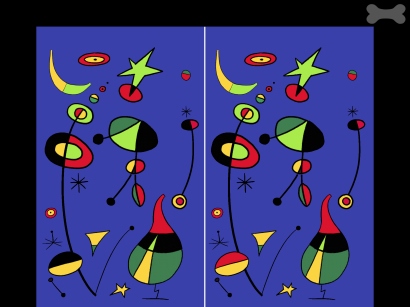 Comparing objects – based on their pattern or shape
Comparing objects – based on their pattern or shape
The colors or shapes of certain objects or images are compared based on their pattern or the different combination of their individual parts.
This skill can be practiced in the following educational games:
- learning level "Kandinsky" in Lazuli 5+
- learning level "Butterflies" in Lazuli 6+
- learning level "Miró" in Lazuli 7+
- learning level "Niki" in Lazuli 7+

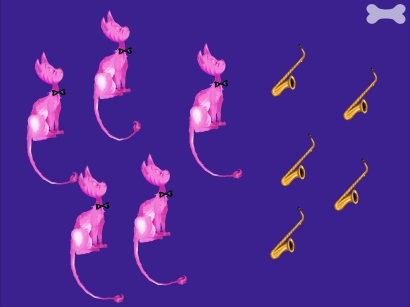 One-to-one classification
One-to-one classification
A certain number of objects must be accurately assigned to another object. For example, five saxophones need to be distributed over five cats – so each cat needs to get one saxophone.
This skill can be practiced in the following educational game:
- learning level "Cats" in Lazuli 4+

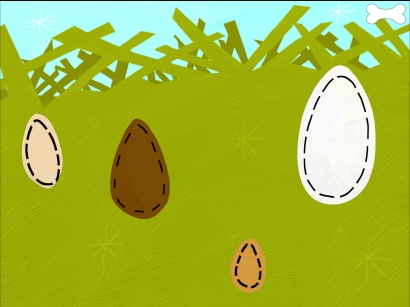 Ordering objects
Ordering objects
A certain number of objects must be put in order according to a specific characteristic. For example, ordered from big to small, up to down, light to dark.
This skill can be practiced in the following educational game:
- learning level "Eggs" in Lazuli 5+

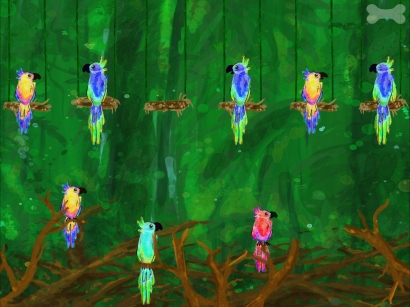 Logical sequence
Logical sequence
A series of objects or numbers continues based on a specific rule. This skill generally requires identifying the sequence and completing it or continuing it.
This skill can be practiced in the following educational games:
- learning level "Fish" in Lazuli 5+
- learning level "Parrots" in Lazuli 6+
- learning level "Logical Sequence" in Lazuli 7+

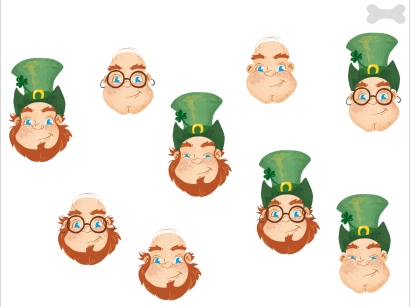 Classifying objects
Classifying objects
MMultiple objects or images are compared according to one or more characteristics and created as a separate set. Membership of the set may be determined by factors such as size, color, shape etc. For example: "Which characters have a hat, a beard, but no glasses?"
This skill can be practiced in the following educational games:
- learning level "Balloons" in Lazuli 4+
- learning level "Shapes" in Lazuli 4+
- learning level "Rockets" in Lazuli 5+
- learning level "Bugs" in Lazuli 5+
- learning level "Cookies" in Lazuli 5+
- learning level "Leprechaun" in Lazuli 6+ ""
- learning level "Rabbit" in Lazuli 7+

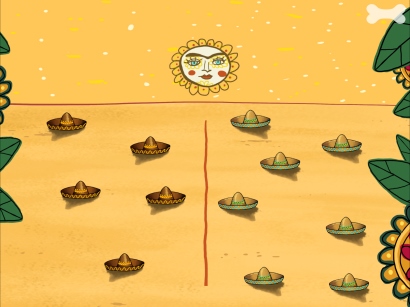 Comparing quantities
Comparing quantities
Two or more quantities are compared based on their number of objects. The objects are all the same size or all different sizes. The idea is to identify which quantity is larger or smaller, or which quantity contains a certain number of objects.
This skill can be practiced in the following educational games:
- learning level "Smileys" in Lazuli 4+
- learning level "Hats" in Lazuli 4+
- learning level "Pictures" in Lazuli 5+
- learning level "Eyes" in Lazuli 5+
- learning level "Bugs" in Lazuli 5+
- learning level "Seals" in Lazuli 5+
- learning level "Confetti" in Lazuli 6+
- learning level "Sheep" in Lazuli 7+

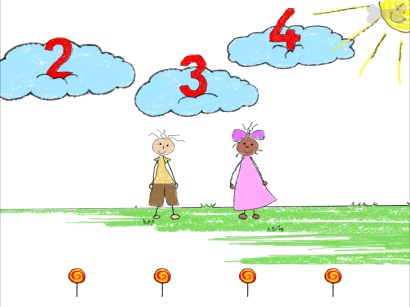 Doubling, halving and splitting quantities
Doubling, halving and splitting quantities
A certain number of objects must be doubled, halved or evenly split.
This skill can be practiced in the following educational games:
- learning level "Colored Fields" in Lazuli 6+
- learning level "Dots" in Lazuli 7+
- learning level "Lollipops" in Lazuli 7+

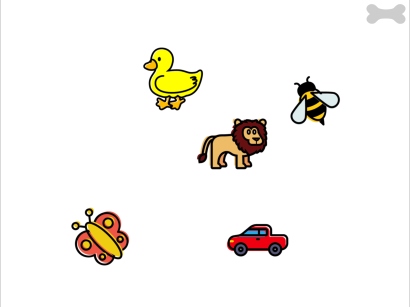 Forming groups
Forming groups
A quantity of objects with at least one common characteristic, property or category must be identified from a set number of different objects, or an object which has nothing in common with the other objects must be identified. For example: "What can't fly?"
This skill can be practiced in the following educational game:
- learning level "Pop Art" in Lazuli 5+

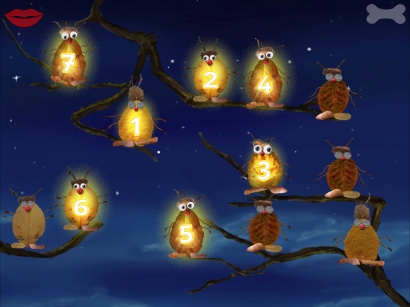 Recognizing a series of numbers as words
Recognizing a series of numbers as words
Recognizing the series of numbers as words: "one-two-three-…"
This skill can be practiced in the following educational game:
- learning level "Gnomes" in Lazuli 4+

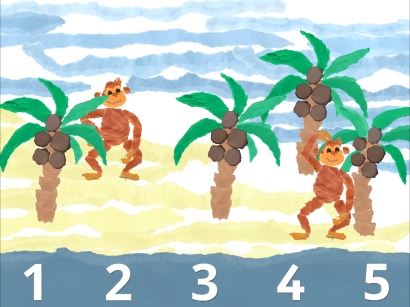 Matching: Number - quantity
Matching: Number - quantity
A number or number word is matched with a quantity of exactly this number of objects.
This skill can be practiced in the following educational games:
- learning level "Snake" in Lazuli 5+
- learning level "Pictures" in Lazuli 5+
- learning level "Eyes" in Lazuli 5+
- learning level "Ducks" in Lazuli 6+
- learning level "Island" in Lazuli 6+
- learning level "Chicks" in Lazuli 6+
- learning level "Confetti" in Lazuli 6+
- learning level "Dots" in Lazuli 7+
- learning level "Birds" in Lazuli 7+
- learning level "Lollipops" in Lazuli 7+

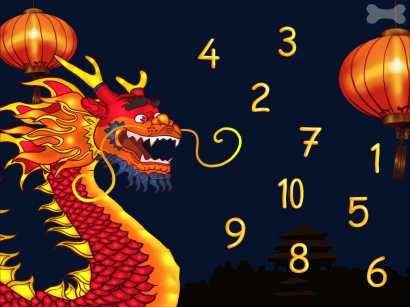 Matching: Number word - digit
Matching: Number word - digit
The number word is matched with the relevant digit.
This skill can be practiced in the following educational games:
- learning level "Dragon" in Lazuli 6+
- learning level "Balancing Act" in Lazuli 7+

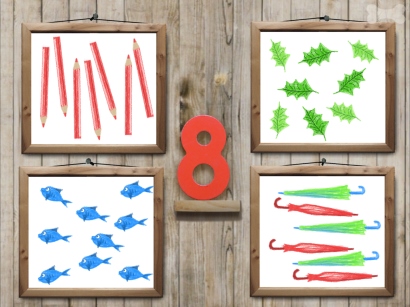 Counting forwards
Counting forwards
A certain number of objects are counted to determine the total number.
This skill can be practiced in the following educational games:
- learning level "Magician" in Lazuli 4+
- learning level "Snowballs" in Lazuli 4+
- learning level "Doors" in Lazuli 5+
- learning level "Snake" in Lazuli 5+
- learning level "Pictures" in Lazuli 5+
- learning level "Eyes" in Lazuli 5+
- learning level "Seals" in Lazuli 5+
- learning level "Ducks" in Lazuli 6+
- learning level "Island" in Lazuli 6+
- learning level "Chicks" in Lazuli 6+
- learning level "Water" in Lazuli 7+
- learning level "Dots" in Lazuli 7+
- learning level "Lollipops" in Lazuli 7+

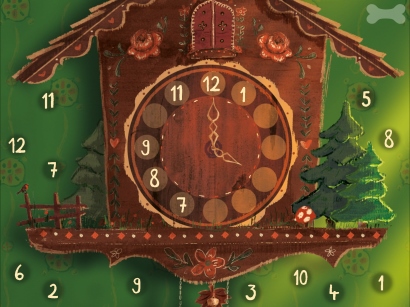 Steady numerical sequence
Steady numerical sequence
Recognizing the steady numerical sequence in order to keep counting up to a certain number, count backwards, or fill in a missing number.
This skill can be practiced in the following educational games:
- learning level "Clock" in Lazuli 6+
- learning level "Number Line" in Lazuli 6+
- learning level "Water" in Lazuli 7+

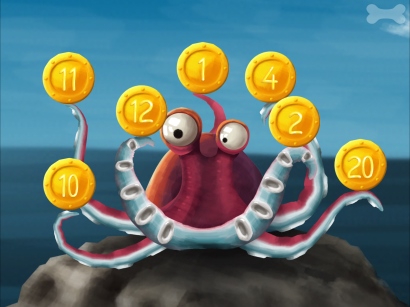 Comparing numbers by size
Comparing numbers by size
Numbers are compared based on their size.
This skill can be practiced in the following educational games:
- learning level "Peacocks" in Lazuli 7+
- learning level "Octopus" in Lazuli 7+

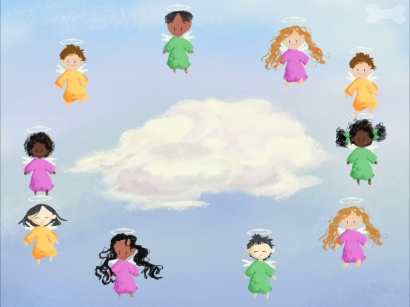 Adding objects statically and dynamically
Adding objects statically and dynamically
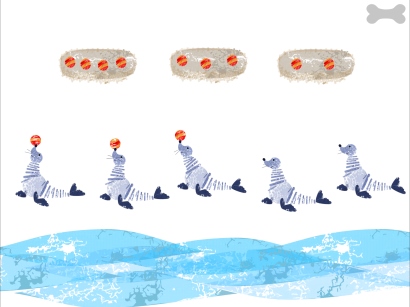 Static subtracting of objects
Static subtracting of objects
Two quantities of objects are compared, and the difference in number established. For example: "How many balls are needed in order for all seals to have a ball?"
This skill can be practiced in the following educational games:

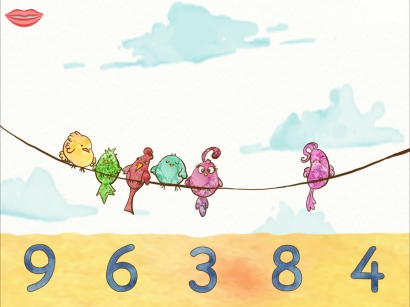 Dynamic subtracting of objects
Dynamic subtracting of objects
A certain number of objects disappear from a set quantity. The idea is to determine how many objects have disappeared.
This skill can be practiced in the following educational games:

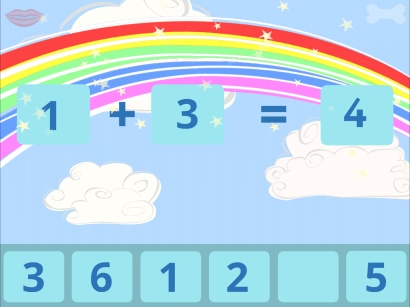 Adding and subtracting
Adding and subtracting
Addition and subtraction tasks using numbers.
This skill can be practiced in the following educational games:
- learning level "Chicks" in Lazuli 6+
- learning level "Arithmetic" in Lazuli 7+
- learning level "Octopus" in Lazuli 7+

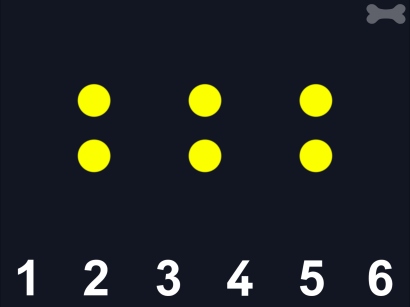 Doubling and halving numbers
Doubling and halving numbers
Numbers are doubled or halved.
This skill can be practiced in the following educational game:
- learning level "Dots" in Lazuli 7+

 Multiplying
Multiplying
Numbers are multiplied. For example: 2 times 3 buds need to be touched.
This skill can be practiced in the following educational game:
- learning level "Tree" in Lazuli 7+

